Cookies are files that, by default of any internet browser, are stored on your computer while browsing the web. Their purpose is to keep the configuration settings and information of the web pages you usually visit. Some types of cookies are used to keep track of the activities carried out by users on the web or to display targeted advertisements. Some people prefer to disable the use of cookies to protect their privacy. This article explains how to block the use of cookies on the most popular internet browsers.
Steps
Method 1 of 7: Chrome (Computer)
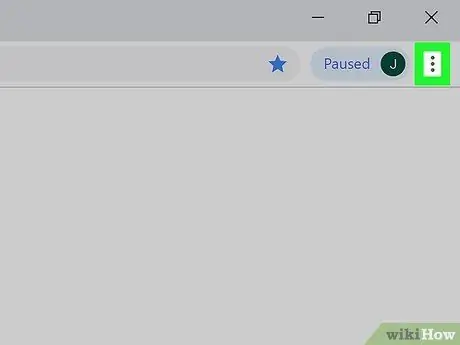
Step 1. Click on the ⋮ button which gives access to the main Chrome menu
It features three vertically aligned dots and is located in the upper right corner of the browser window.
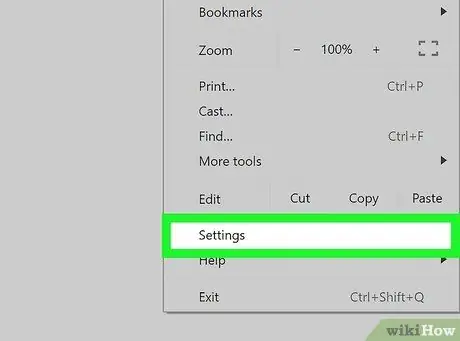
Step 2. Click on the Settings item
It is visible at the bottom of the appeared menu.
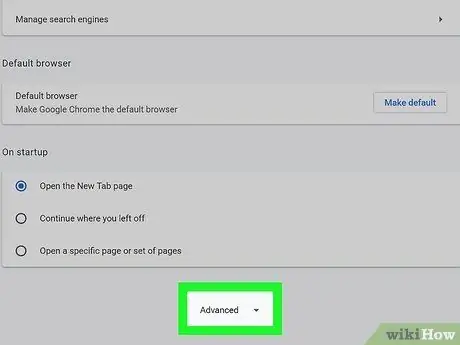
Step 3. Click the Show Advanced or Advanced Settings link
It is located at the bottom of the "Settings" menu. Additional configuration options will be shown.
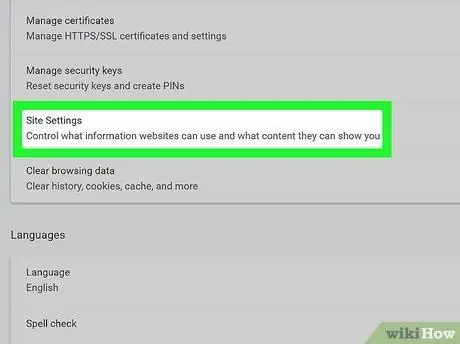
Step 4. Click on the Site Settings or Content Settings option
It is located in the "Privacy and security" section of the menu.
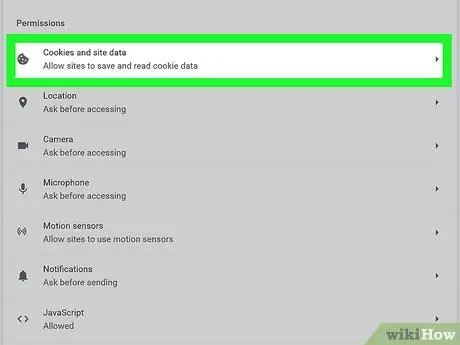
Step 5. Click on Cookies and site data
It is located at the top of the newly appeared menu.

Step 6. Click on the slider
located on the right of the option "Allow sites to save and read cookie data (recommended)".
The latter is visible at the top of the "Cookies and site data" menu.
If you are using an older version of Chrome, you will need to select "Block sites from setting any data"
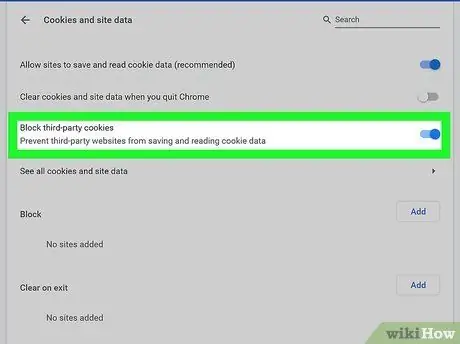
Step 7. Click on the slider
located on the right of the "Block third-party cookies" option.
It is displayed in the "Cookies and site data" menu.
Alternatively, you can block the receipt of cookies from a specific website. To do this, click on the button add placed next to "Block" and enter the URL of the domain for which you want to block the use of cookies, then click on the button add.
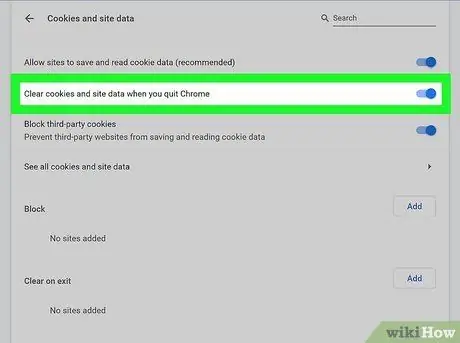
Step 8. Click on the slider
located on the right of the item "Delete cookies and site data when Chrome closes".
In this way, Chrome will automatically delete cookies and website data every time you close the program.
If you do not want cookies to be deleted every time you close the Chrome window, you must disable the latter option

Step 9. Close the Chrome window
Click on the "X" icon located in the upper right corner of the browser window on Windows or click on the red "x" icon located in the upper left corner of the same window on Mac.
Method 2 of 7: Safari (iOS devices)
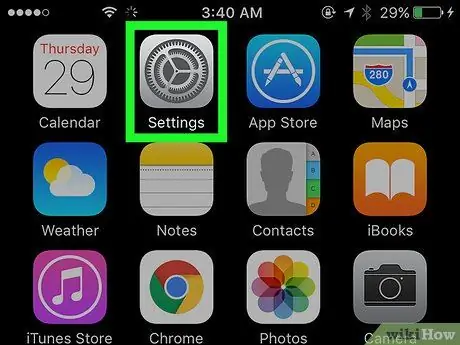
Step 1. Launch the Settings app by tapping the icon
You can change the Safari browser configuration settings through the iOS device Settings app.
It is not possible to block the use of cookies within the version of Chrome for iPhone and iPad due to restrictions imposed by Apple on third-party applications. If you are using Chrome on an iOS device and you need to block the use of cookies, you can activate the incognito mode or opt for the use of Safari
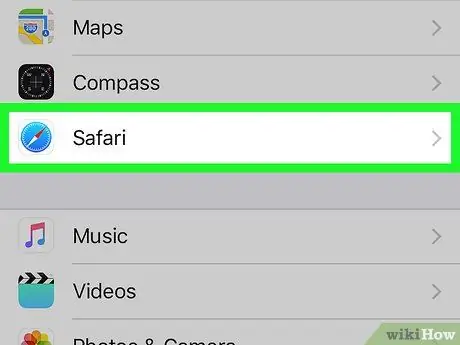
Step 2. Select the Safari option
It has a blue compass icon and is listed in the "Settings" menu.
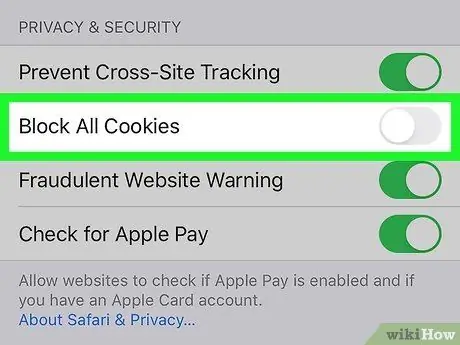
Step 3. Activate the cursor
located to the right of the "Block all cookies" option.
It is located in the "Privacy and Security" section of the menu.
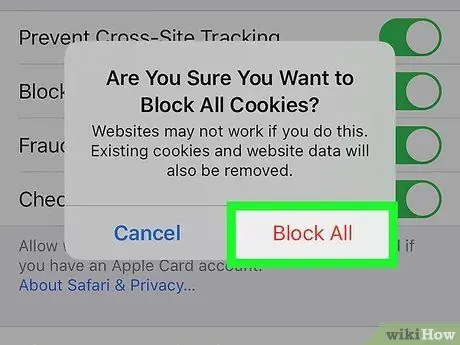
Step 4. Select the Block all option
It is highlighted in red and is located inside the pop-up window that appeared. At this point, Safari will no longer be able to use and store cookies from the websites you visit.
Method 3 of 7: Chrome (Android devices)
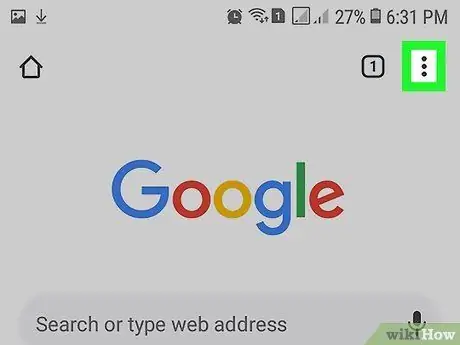
Step 1. Press the ⋮ button to access the Chrome main menu
It features three vertically aligned dots and is located in the upper right corner of the browser.
It is not possible to block the use of cookies within the version of Chrome for iPhone and iPad due to restrictions imposed by Apple on third-party applications. If you are using Chrome on an iOS device and you need to block the use of cookies, you can activate the incognito mode or opt for the use of Safari

Step 2. Select the Settings item
It's displayed at the bottom of the Chrome main menu.

Step 3. Select the Site Settings item
It is the third option displayed within the "Advanced" section of the "Settings" menu.
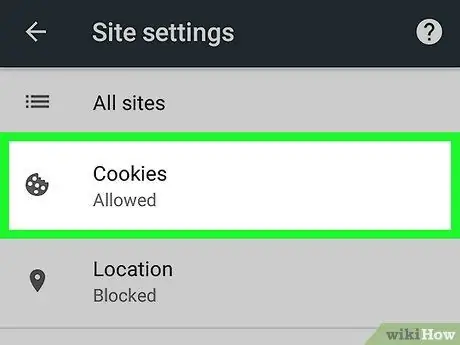
Step 4. Choose the item Cookies
It features a stylized cookie icon and is listed under the "Site Settings" menu.
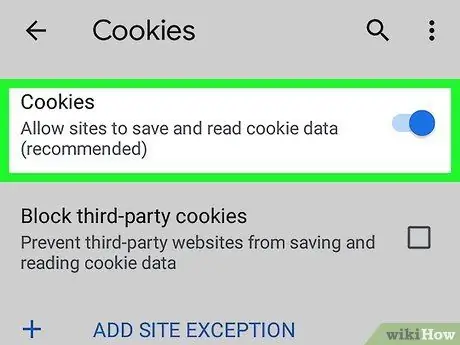
Step 5. Activate the cursor
located to the right of the "Cookie" option.
It is displayed at the top right of the appeared menu.
Alternatively, you can block the receipt of cookies from a specific website. To do this, select the item Add exception for a site displayed at the bottom of the "Cookies" menu, then enter the URL of the domain you want to block and press the button add located in the lower right corner of the screen.
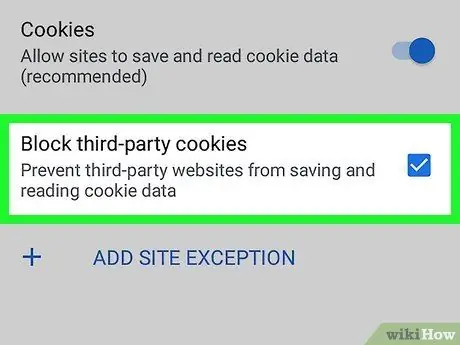
Step 6. Select the check button
"Block third party cookies".
It is the last option displayed in the "Cookies" menu. In this way you will completely block the receipt of third-party cookies.
Method 4 of 7: Firefox
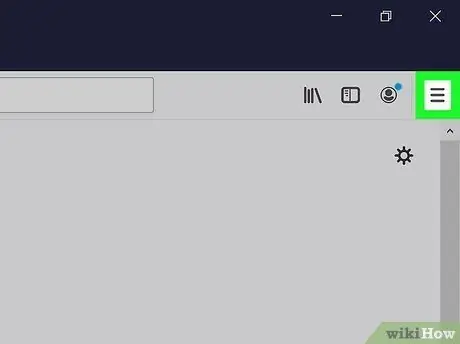
Step 1. Click the ☰ button to access the Firefox main menu
It is characterized by an icon in which three parallel horizontal lines are visible. It is located in the upper right corner of the program window.
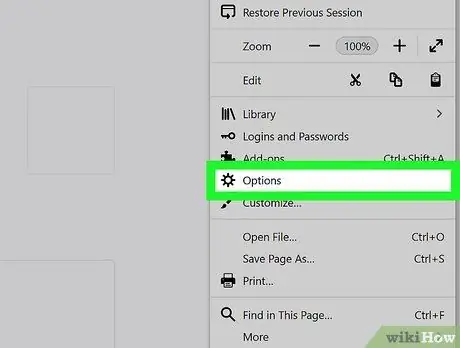
Step 2. Click on the Options item
It features a gear icon and is listed within the appeared menu.
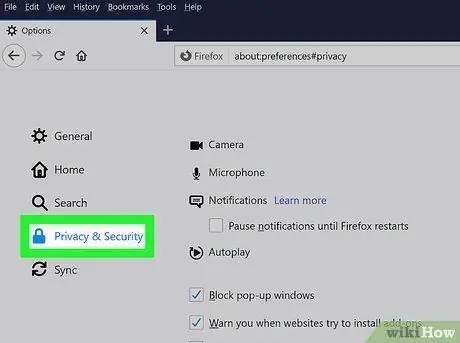
Step 3. Click on the Privacy and Security tab
It features a padlock icon and is listed along the left side of the page that appears.

Step 4. Click on the "Custom" radio button
It is the last option displayed in the "Content Blocking" section.
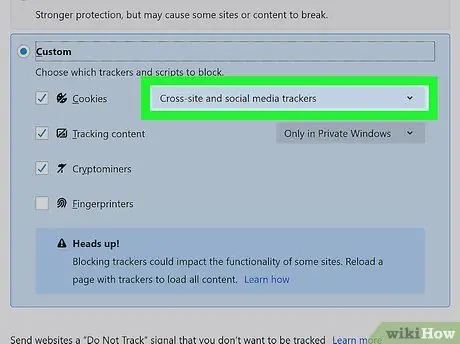
Step 5. Click on the "Cookies" drop-down menu
It is the first option listed within the "Custom" pane of the "Content Blocking" section.
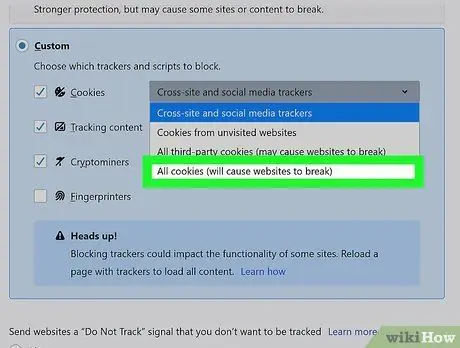
Step 6. Click on All cookies (some sites will not work properly)
It is the last option listed within the "Cookie" drop-down menu of the "Custom" section.
- If you prefer, you can select the "Block third-party cookies" option to allow the use of the main cookies of the sites you visit and block those from third parties.
- Alternatively, you can choose to block cookies from specific sites. To perform this step, click on the button Manage permissions placed in the "Cookies and website data" section, enter the URL of the site you want to block in the "Website address" text field, then click on the button Block or Save Changes.

Step 7. Click on the "Delete cookies and website data when Firefox closes" checkbox
In this way, Firefox will automatically delete the cookies when you close the corresponding window.
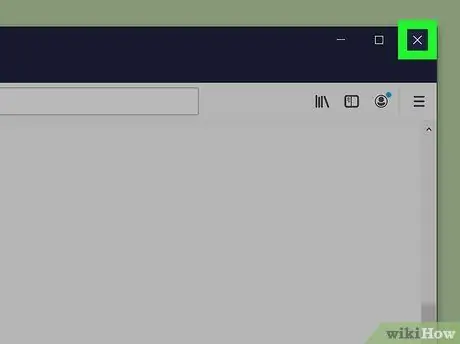
Step 8. Close Firefox
To perform this step click on the "X" icon located in the upper right corner of the browser window on Windows or click on the red "x" icon located in the upper left corner of the same window on Mac.
Method 5 of 7: Microsoft Edge

Step 1. Click on the… button
It has three dots and is located in the upper right corner of the program window. The Edge main menu will appear.
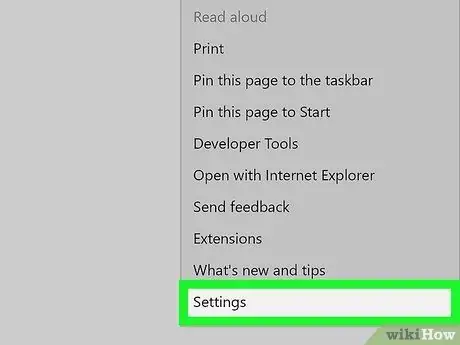
Step 2. Click on the Settings item
It is located at the bottom of the menu. It features a gear icon.
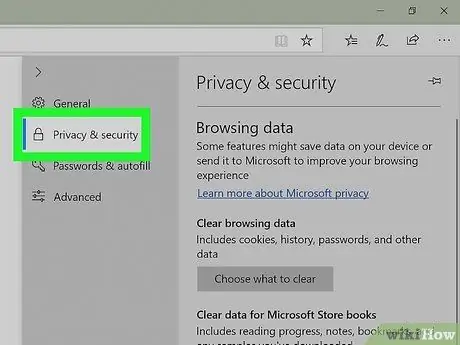
Step 3. Click on the Privacy and Security option
It features a padlock icon and is displayed on the left side of the menu that appears.
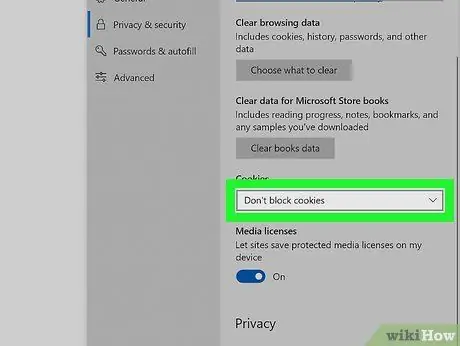
Step 4. Click on the "Cookies" drop-down menu
It is displayed approximately in the middle of the "Privacy and security" tab.
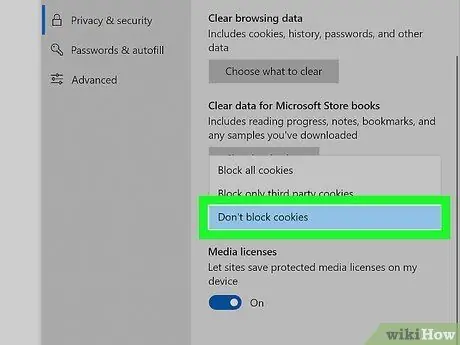
Step 5. Click on the option Block all cookies
It is the last item listed in the "Cookie" drop-down menu.
If you prefer, you can select the item "Block only third-party cookies" to block cookies from third-party sites
Method 6 of 7: Safari (Computer)
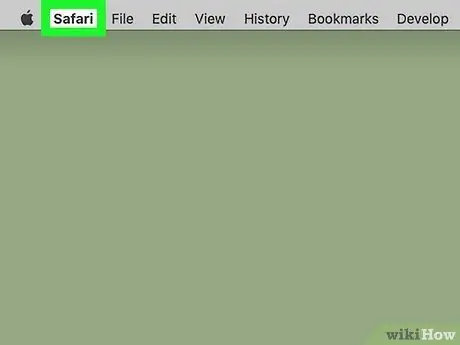
Step 1. Click on the Safari menu
It is displayed in the upper left corner of the Mac menu bar. The indicated menu will only be visible on the menu bar when the Safari window is active and displayed on the screen.

Step 2. Click on the Preferences item
It is the third option listed in the "Safari" drop-down menu.
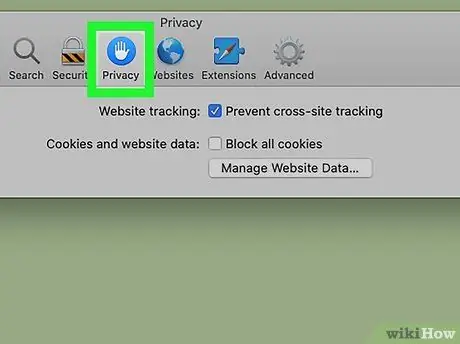
Step 3. Click on the Privacy tab
It features a blue hand icon.

Step 4. Click on the check button "Block all cookies"
It is the second option of the "Privacy" tab. At this point, Safari will no longer be able to store cookies from the websites you visit on your computer.
Method 7 of 7: Internet Explorer
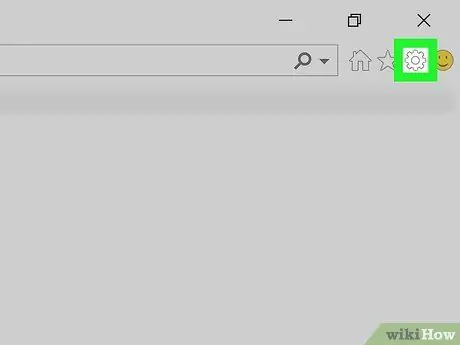
Step 1. Click on the Tools menu or the "Settings" icon
It is located in the upper right corner of the browser window.
If the tools menu is not visible, press the Alt key
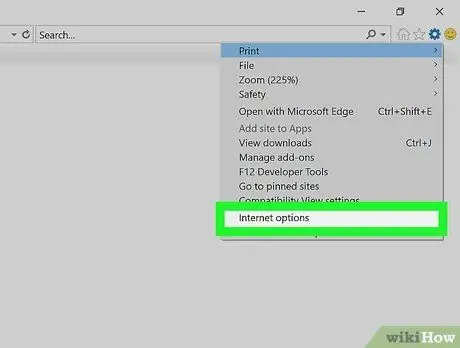
Step 2. Click on Internet Options
It is listed at the bottom of the "Tools" drop-down menu.
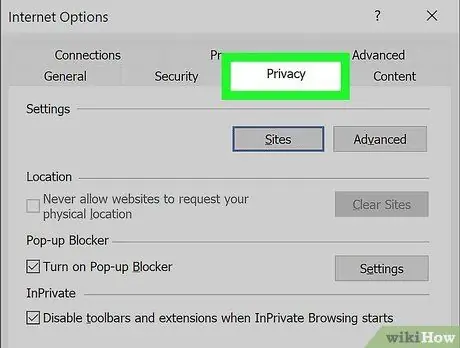
Step 3. Click on the Privacy tab
It is the third tab displayed at the top of the "Internet Options" window.
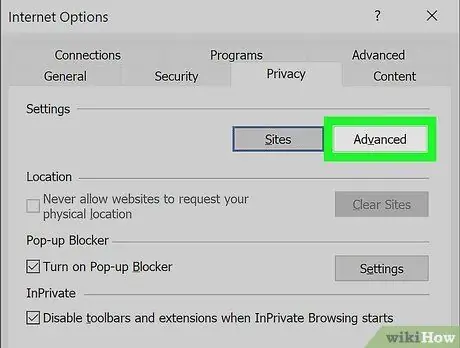
Step 4. Click the Advanced button
It is located on the right of the "Settings" section of the "Privacy" tab.
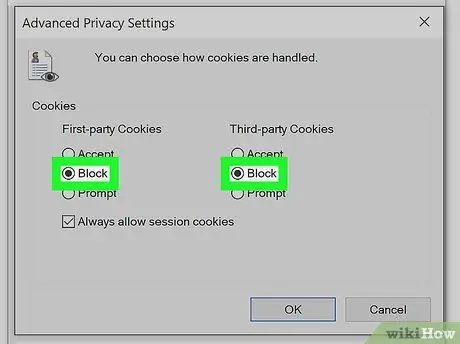
Step 5. Click the Block radio button in both the "Web site cookies viewed" column and the "Third party cookies" column
Within each of the columns indicated there are three options, click on the "Block" item of both to prevent Internet Explorer from storing cookies on your computer.
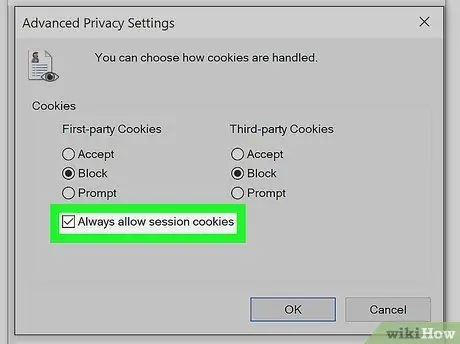
Step 6. Click on the "Always accept session cookies" checkbox
It is located at the bottom of the "Advanced Privacy Settings" pop-up window.

Step 7. Click the OK button to save and apply the new settings
From now on Internet Explorer will no longer store cookies on the computer.
Advice
- By completely disabling cookies, you will need to log in every time you visit the sites you usually consult, such as the e-mail client, social networks, home banking, etc.
- If you need that the cookies relating to the current web browsing session are not stored on your computer, activate the "Incognito" or "Private" mode of the browser. In this scenario, no cookies will be stored on the device.






